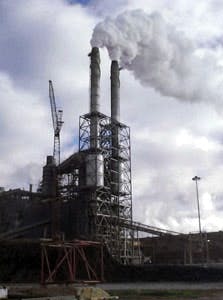Scrubbers help to meet emission control standards
When a Georgia-based manufacturer of paper products expanded its production capacity and physical plant, it came under more stringent emission-control standards for its two multi-fuel boilers. The boilers use a diverse combination of fuels that include wood/bark, sludge, coal and oil to produce approximately 500,000 lbs of steam per hr. To meet current and future emission control standards, the paper manufacturer selected a turnkey Venturi system by Parsippany, N.J.-based AirPol, Inc., which can be designed for practically any particulate emission level and upgraded to meet future requirements easily.
The Venturi scrubbers replaced two existing AirPol scrubbers originally installed in 1974. The previous scrubber system had provided good service until the boiler capacity requirements increased during the plant's expansion in the mid-1990s. The large increase in gas volume from the boilers caused excessive particulate emissions and increased stack opacity levels. Ironically, the most annoying effect for mill personnel was the dirty droplets "raining" from the stacks.
To meet current and future emission control standards, a paper manufacturing plant selected a turnkey system by AirPol, Inc.
In selecting the AirPol system, the paper manufacturer established clear requirements. It had to meet the gas volume per boiler requirement of approximately 450,000 ACFM at 390°F, with a maximum particulate loading of 2,680 pounds/hr. It had to handle process gas volume fluctuations for the two boilers, which operated 24/7. It also had to be adaptable to meet future control standards. And, it had to accommodate a strict limitation for liquid discharge from the stacks.
AirPol's system incorporated two gas-leaning systems. Each Venturi is equipped with a double-bladed, large-diameter, adjustable-throat scrubber, which ensures constant pressure drop to accommodate variations in flue gas volume. Also included is a cyclone separator, exhaust stack and recycle tank. The project included structural support towers, stairways, ductwork, instrumentation, demolition of existing equipment and installation, commissioning and startup.
After start-up, the system met state requirements for particulate emissions,not to exceed 0.28 pounds per million BTU at a maximum inlet (118.4 lbs/hr at average inlet.) Actual results were less than one-third of the allowable pressure drop. Performance testing after startup confirmed compliance and determined no discharge of droplets from the stacks.

